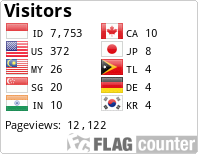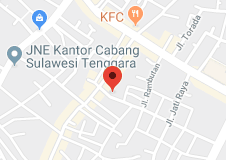PROFIL LIPID PADA PENDERITA DIABETES MELLITUS DENGAN KADAR HbA1C TINGGI
Abstract
ABSTRAK
Diabetes Mellitus (DM) merupakansalahsatupenyakitmetabolik yang ditandai dengan hiperglikemia dan gangguan metabolisme karbohidrat, lemak, dan protein yang disebabkanoleh kekurangan secara absolut atau relatif dari kerja dan atau sekresi insulin.Kontrol glikemik pasien mendapat dampak yang kuat pada tingkat lipid serum dan dislipidemia yang sering dijumpai pada mereka yang telah mendapat kontrol glikemik yang buruk.Pengukuran kadar HbA1c harus dilakukan secara serial untuk memperkirakan kontrol glukosa seorang individu, memperkirakan resiko komplikasi serta respon pengobatan. Tujuanpenelitianadalahuntukmengetahuigambaranprofil lipid padapenderita DM dengankadar HbA1c tinggi. Jenispenelitian yang digunakanadalahdeskriptifdenganmetodecross sectional danpengambilan data secara Purposive sampling,sampel data diambildaricatatanmedikpasien DM di LaboratoriumKlinikMaixmaKendari. Data yang diambiladalahusia, jeniskelamin, kadar HbA1Cdanprofil lipid. Sampel data diambildaricatatanrekammedikpasienDMsebanyak 23 orang.Hasilpenelitianmenunjukkanmenunjukkanbahwapenderita DM dengankadar HbA1C tinggi (5,7% - 15,0%) memilikiresikopeningkatansejumlahprofil lipid diantaranyakadarkolesteroltinggi (> 200 mg/dL) sebanyak 15 responden (65%), HDL rendah (< 40 mg/dL) sebanyak 9 responden (39%), kadar LDL tinggi (> 100 mg/dL) sebanyak 23 responden (100%), kadartrigliseridatinggi (> 200 mg/dL) sebanyak 15 responden (65%).Penderita DM dengancontrolglikemikburuk (HbA1C > 5,7%) memilikiresikotinggiuntukterjadinyapeningkatansejumlahbagian lipid (kolesterol, LDL, dantrigliserida) danpenurunan HDL.
Kata Kunci : Pofil Lipid, Diabetes Mellitus, HbA1C
ABSTRACT
Diabetes Mellitus (DM) is one of the metabolic diseases characterized by hyperglycemia and carbohydrate, fat, and protein metabolism disorders caused by absolute or relative deficiencies of the work and / or insulin secretion (Fatima, 2015). Glycemic control of patients gets a strong impact on the level of serum lipids and dyslipidemia which is often found in those who have had poor glycemic control. Measurement of HbA1c levels must be done serially to estimate an individual's glucose control, estimate the risk of complications and treatment response. The purpose of the study was to determine the description of lipid profiles in patients with DM with high HbA1c levels. The type of research used was descriptive with cross sectional method and purposive sampling data collection, data samples were taken from medical records of DM patients at the Maixma Clinic Kendari Laboratory. The data taken were age, sex, HbA1C and lipid profile. Data samples were taken from records of medical records of DM patients as many as 23 people. The results showed that DM patients with high HbA1C levels (5.7% -15.0%) had an increased risk of lipid profiles including high cholesterol (> 200 mg / dL) of 15 respondents (65%), low HDL ( <40 mg / dL) of 9 respondents (39%), high LDL (> 100 mg / dL) of 23 respondents (100%), high triglyceride levels (> 200 mg / dL) of 15 respondents (65%). DM patients with poor glycemic control (HbA1C> 5.7%) have a high risk of increased lipid portions (cholesterol, LDL, andtriglycerides) and HDL decreases.
Keywords : Lipid Profile, Diabetes Mellitus, HbA1C
Additional Files
Published
Issue
Section
License
Authors who publish on JAKK can share their research in a number of ways. JAKK does not impose an embargo on published journals, meaning that researchers can access it openly after the article is published. Researchers who have subscribed to access to articles can also share.
JAKK already uses the Open Journal System (OJS) thereby enabling the final version of all published research articles to be placed in any digital archive immediately after publication. JAKK can automatically make feeds of open access articles available to any repository that wishes to receive them.
Authors who publish with this journal agree to the following terms:
* Authors retain copyright and grant the journal right of first publication, with licensed under a Creative Commons Attribution ShareAlike 4.0 International License (CC BY-SA 4.0) that allows others to share the work with an acknowledgement of the work's authorship and initial publication in this journal.
* Authors are able to enter into separate, additional contractual arrangements for the non-exclusive distribution of the journal's published version of the work (e.g., post it to an institutional repository or publish it in a book), with an acknowledgement of its initial publication in this journal.
* Authors are permitted and encouraged to post their work online (e.g., in institutional repositories or on their website) prior to and during the submission process, as it can lead to productive exchanges, as well as earlier and greater citation of published work.







2.jpg)

